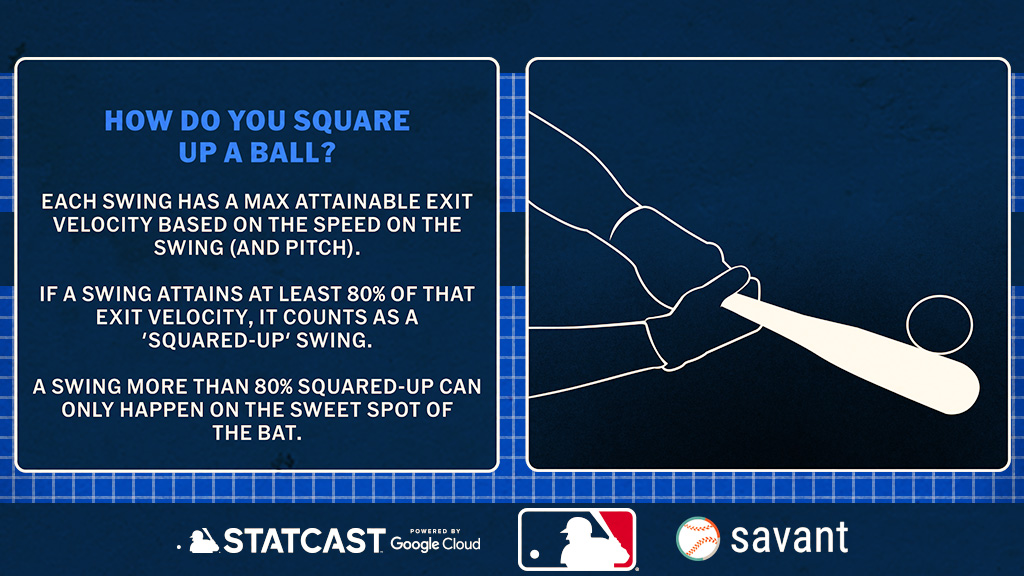Squared-up Rate
Definition
A swing’s squared-up rate tells us how much of the highest possible exit velocity available (based on the physics related to the swing speed and pitch speed) a batter was able to obtain – it is, at its simplest, how much exit velocity did you get as a share of how much exit velocity was possible based on your swing speed and the speed of the pitch. A swing that is 60% squared up, for example, tells you that the batter attained 60% of the maximum possible exit velocity available to him, again based on the speed of the swing and pitch.
Data observation has told us that it’s only possible to attain that maximum possible exit velocity when a ball hits the sweet spot of the bat, approximately 4 to 9 inches from the head of the bat. Therefore, comparing the exit velocity observed with the exit velocity theoretically possible can tell us a great deal about how well the batter squared the ball up. Any particular swing can range from 0% squared up to 100% squared up.
For Statcast purposes, any swing that is at least 80% squared up is considered to have been “a squared-up swing.”

Consider these two examples…
Trevor Larnach HR
- [video link]
- 75.6 MPH swing off a 98.8 MPH fastball
- Max possible exit velo given that: 113.4 MPH
- Actual exit velo: 110 MPH.
- 97% squared up. (A squared-up ball.)
Ronald Acuña Jr. fly out
- [video link]
- 78.6 MPH swing off a 98.4 MPH fastball
- Max possible exit velo given that: 117.4 MPH.
- Actual exit velo: 90.3 MPH.
- 77% squared up. (Not a squared-up ball.)
Larnach didn’t actually swing as hard as Acuña. But he squared it up MUCH, much better than Acuña, who got jammed.
In 2024’s first month, 25% of swings were squared-up and 33% of contacts were squared-up. The value difference between them is enormous.
Squared up
.371 BA // .656 SLG // .438 wOBA // 60% hard-hit rate // +11.4 run value per 100
Not squared up
.126 BA // .142 SLG // .119 wOBA // 1% hard-hit rate // -6.7 run value per 100
That said, a squared-up swing does not have to be a hard or fast swing. For example, this Adley Rutschman 95.8 MPH exit velocity (video link) single up the middle was almost perfectly squared up (97%), because the combination of a 77.2 MPH curveball and a below-average swing speed of 67 MPH each worked together to limit the highest possible exit velocity available to 98.7 MPH, which he came close to attaining.
For a more-valuable combination of squaring up the ball and doing so with a purposeful swing, please see: Blasts.
You may view the current season’s squared-up leaderboard here.